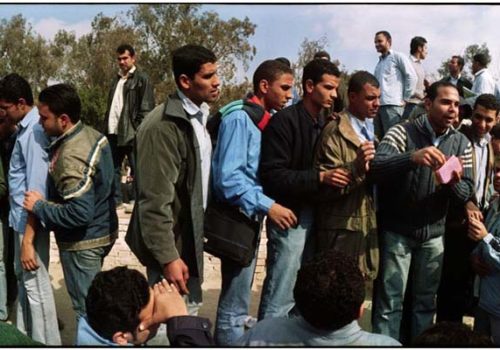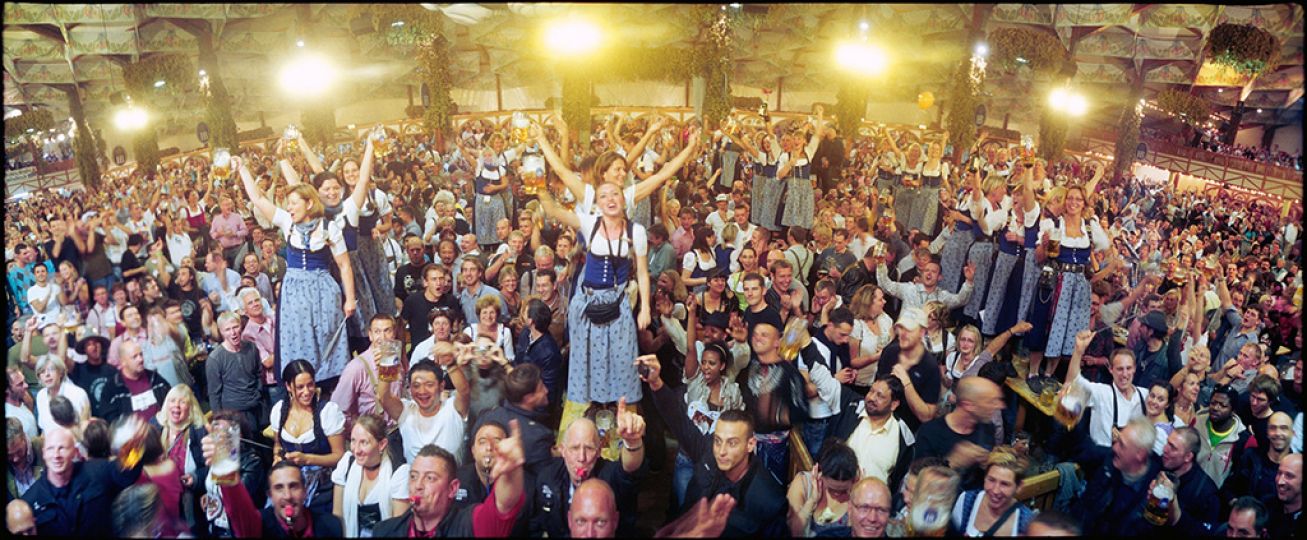The work of Swiss artist Michael von Graffenried has attracted increasing recognition in the contemporary art world, though he originally gained acclaim as a documentary photographer. While the artist has stated that he seeks to “show the reality of today” in other words to record and show what is there with complete objectivity, he has chosen subjects and developed techniques that have allowed his practice to gradually emerge as something far more than simple recording of reality.
Indeed, Graffenried has developed a personal and penetrating body of work that has taken itself far beyond the criteria of photojournalism. Each image stands on its own as a revealing microcosm of the societies and communities in which humans exist, and this has been made possible, as we shall see, by the photographer’s efforts to “disappear” – to be an invisible eye in the midst of humanity.
Michael von Graffenried’s works realized in Algeria and Cairo represented a further development in his desire as an artist to get inside these particular societies where photographers were viewed with great suspicion, which itself demanded solutions enabling him to take photographs unnoticed. In order to do this, Graffenried began using a small panoramic Widelux camera, that he could hold discreetly on his chest, operating it without his subjects being aware of his actions. Functioning in this way allowed the artist the great advantage of creating images that totally removed the relation between the photographer and people being photographed.
“ I went to Cairo on a three-months artist residency grant. I soon met a local gallerist, who expressed interest in my work. But he then called me to say that he could not sleep at night and that he would lose the gallery if he showed my work. I first had a picture of the Birqash camel market printed on canvas sheet. When I came back with the other pictures, the woman in the shop asked me what the subject matter was. This is Cairo, I said, don’t you recognize your city ? She had her boss come in and look, and he refused to work on the pictures, telling me that, as press material, it must be subjected to official censorship. Naturally, the refusal, the self-censorship, is the result of the severe State censorship. But I can’t help seeing in it a kind of hypocrisy as well. My images show nothing more than the city’s daily life, what each and everyone on its inhabitants see with their own eyes everyday. I finally found another printer, and decided to keep silent about my project, which was to show my pictures for a day on a rooftop in the heart of the city. In downtown Cairo, the poorest of the poor, many of them economic refugees from Southern Egypt, live in shacks on the rooftops. My upstairs “neighbors” immediately agreed to share their rooftop. About a hundred people showed up on the day. The Daily Star newspaper published a story about the exhibition a week later.”
Throughout Michael von Graffenried’s practice, his camera has always been a tool that allows him to communicate – with his subjects, with society, and with the public at large, whether in the specific context where the photographs were made, or in a much wider context internationally.
The exhibition at Parker’s Box is intended to be an integral part of that communication – presenting unassuming images that bear witness to the rather giddy, and very loaded atmosphere of Cairo in the years before the Arab Spring of 2011. Unlike the overload of media images that covered much of the subsequent events, flooding into our consciousness through the filtering effect of the multitude of screens that accompany our every waking moment, Michael von Graffenried’s photographs pull the spectator physically into their arena.
The closeness of foreground subjects in these panoramic images adds to the flattening effect of the panning action of the camera, making the space inhabited by the subjects seem to come close to fusing with the space occupied by the spectator. In this way, details become more formally imposing, like aesthetic devices in classical painting, while at the same time becoming ever more intriguing and ambiguous. The proximity to the content of these photographs that the spectator enjoys, means that such details as the Arabic writing on a riot policeman’s shield, a white veil entirely enveloping a joking schoolgirl’s head, a butcher’s chopping block, etc…all take on powerful “painterly” presence.
While the exploration of societies struggling to deal with oppressive political contexts is a highly charged arena, by removing photography’s usual veneer of artifice, Michael von Graffenried’s work has succeeded in revealing the true features of humanity in such places.
Parkersbox, Inside Cairo
Michael Von Graffenried, Inside Cairo
June 15 – July 15, 2012
Parker’s Box
193 Grand Street . Brooklyn, New York 11211.
1718 388 2882
Gallery Hours Thur-Sun, 1PM -7PM

















